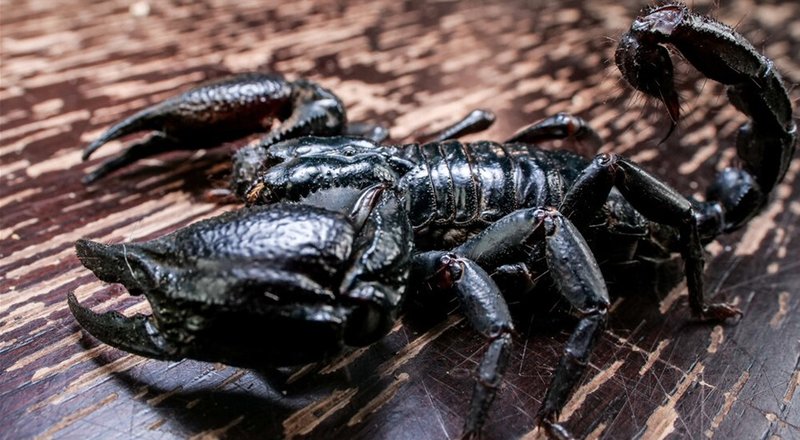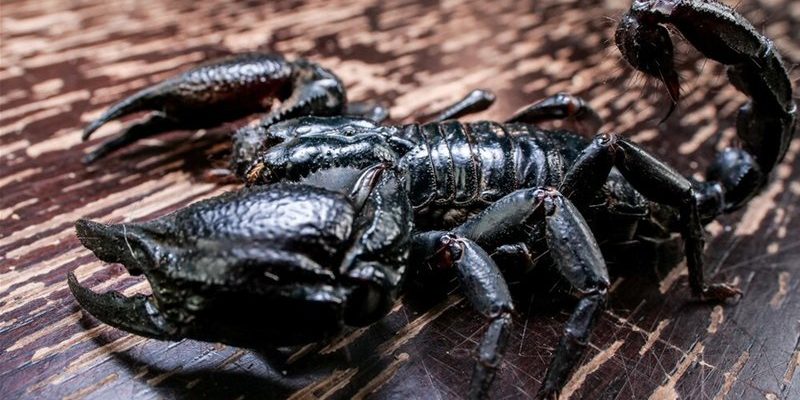
Scorpions are often overlooked, but understanding their habitat offers insights into how they adapt and thrive. It’s like learning about the cozy nooks a cat chooses to curl up in—each spot has its purpose. For the Asian forest scorpion, these preferred habitats aren’t just random; they provide food, shelter, and safety from predators. So, where do these scorpions hang out, and what makes these environments special? Let’s explore this further.
Natural Habitats of the Asian Forest Scorpion
Asian forest scorpions are primarily found in tropical and subtropical areas. Their favored habitats include dense forests, which provide the humidity and cover they relish. Picture a lush, green forest with towering trees and rich, damp soil; it’s like a buffet of both food and shelter for these creatures. The leaf litter, stones, and fallen logs create perfect hiding spots for scorpions, allowing them to ambush prey and avoid being eaten themselves.
In addition to forests, these scorpions can also be spotted in mangrove swamps and coastal areas. While they might not be the first animals that come to mind when you think of the seaside, they’re surprisingly adaptable. They thrive in environments where they can burrow into mud or shelter under rocks, staying moist and safe from the harsh sun. This versatility helps explain why you can find them in various regions across Asia.
Key Locations Across Asia
When it comes to specific countries, the Asian forest scorpion is mostly found in:
- Thailand: Known for its lush jungles, Thailand is a paradise for many wildlife species, including scorpions.
- Myanmar: The dense forests of Myanmar provide ample hiding spots for these arachnids.
- Malaysia: With its thriving rainforests, Malaysia offers a humid environment perfect for scorpions.
- Indonesia: This archipelago has diverse ecosystems where these creatures can comfortably blend in.
These areas not only host the Asian forest scorpion but also a wide array of wildlife, making them vital for biodiversity.
Why Do They Prefer These Habitats?
You might be asking, “What’s so special about these jungles and forests?” The answer lies in the ecosystem of these habitats. The humid environment is ideal for prey like insects, which make up their diet. When the rainy season comes, the increase in insects means a buffet for the scorpions. This creates a thriving community where food is plentiful and survival rates are high.
Moreover, the dense foliage provides protection from predators like birds and larger mammals. Think of it as their own little fortress, where they can bask in the safety of shadows while waiting for the right moment to strike. The moisture in these environments also supports their need for hydration. Without this, they’d be at risk of drying out, similar to how a plant wilts without water.
Playing a Role in the Ecosystem
Understanding the habitat of the Asian forest scorpion also brings light to their role in the ecosystem. They are not just passive inhabitants; they play a crucial part in the food chain. By preying on insects, they help keep those populations in check. This balance is essential for maintaining a healthy ecosystem. So, while they may look intimidating, these scorpions are nature’s controlled pest controllers!
Threats to Their Habitat
As much as we admire these resilient scorpions, they face growing threats from deforestation and habitat destruction. Urban expansion and agriculture are encroaching on their lush homes, stripping away the forests they rely on. It’s a bit like losing a favorite playground; not only does it remove their food sources, but it also puts them at risk from predators.
Pollution is another issue. The introduction of chemicals and waste into their habitats can poison their environment and reduce food availability. As humans continue to impact nature, the future of the Asian forest scorpion hangs in the balance. It’s a reminder of how interconnected we all are and the importance of protecting these unique habitats.
Conservation Efforts
Recognizing the decline of these habitats, conservation initiatives are underway. Various organizations are working to promote sustainable practices and restore forest areas. Educating communities about the importance of these ecosystems helps foster respect and understanding for all wildlife, including the often-misunderstood scorpions.
You might also be surprised to hear that some areas are establishing protected parks where these fascinating creatures can thrive undisturbed. It’s a small but hopeful step toward ensuring that future generations can appreciate the beauty and complexity of these forest-dwelling scorpions.
Common Misconceptions
If you’re like many people, you might think of scorpions primarily as dangerous creatures. While the Asian forest scorpion can sting, they’re usually not aggressive unless provoked. In fact, they’d rather scuttle away and hide than confront a human. It’s the classic case of “don’t judge a book by its cover”—these magnificent arachnids are just trying to survive in their homes.
Another misconception is that all scorpions live in deserts. As we’ve discovered, the Asian forest scorpion thrives in humid environments. This misbelief sometimes leads to a lack of understanding about their diverse habitats.
Understanding Their Behavior
Now that we have a clearer picture of where the Asian forest scorpion lives, it’s interesting to consider their behaviors. They are mostly nocturnal, meaning they come out at night to hunt. This behavior not only protects them from the heat of the day but also makes them more effective predators.
They often use their pincers to catch prey and can exhibit fascinating hunting tactics. Watching them can provide insights into their hunger-driven activities and their role in the ecosystem as both predator and prey.
The Asian forest scorpion is more than just an intimidating creature; it’s a vital part of its ecosystem, thriving in the rich, humid forests of Asia. Understanding where they live and why helps illuminate their fascinating lives and the challenges they face. As we learn to appreciate these creatures, we also recognize the importance of conserving their habitats and ensuring their survival. After all, every part of nature has its own story worth telling—and the story of the Asian forest scorpion is one of resilience and adaptation. So next time you hear about these scorpions, remember the lush jungles, the intricate ecosystems, and the important role they play in our world.

